Iran Crypto Adoption: Stablecoin Comparison Tool
Stablecoin Feature Comparison
Compare key attributes of USDT (Ethereum) and DAI (Polygon) to understand which is better suited for Iranian users navigating sanctions.
USDT (Ethereum)
- Transaction Fee ≈ $12-$15
- Block Time ≈ 13-15 seconds
- Regulatory Scrutiny High
- Liquidity on Iranian Exchanges Very High
DAI (Polygon)
- Transaction Fee ≈ $0.01-$0.02
- Block Time ≈ 2-3 seconds
- Regulatory Scrutiny Low
- Liquidity on Iranian Exchanges Growing
Which is Better for Iranian Users?
Based on current conditions, consider these factors:
- Cost Efficiency: DAI offers significantly lower transaction fees, ideal for frequent transfers.
- Speed: Polygon confirms transactions much faster than Ethereum, reducing delays.
- Regulatory Risk: USDT faces higher scrutiny and freezing risks due to OFAC designations.
- Liquidity: USDT has more exchange pairs, but DAI is growing rapidly.
Quick Comparison Summary
| Feature | USDT (Ethereum) | DAI (Polygon) |
|---|---|---|
| Average Transaction Fee | ≈ $12-$15 | ≈ $0.01-$0.02 |
| Block Confirmation Time | ≈ 13-15 seconds | ≈ 2-3 seconds |
| Regulatory Scrutiny | High | Low |
| Liquidity on Iranian Exchanges | Very High | Growing |
When the international community slammed sanctions on Iran in 2017, the country’s access to global finance shrank overnight. Faced with blocked SWIFT lines and frozen assets, ordinary Iranians and state‑linked actors turned to digital money as a lifeline. The result is aIran crypto adoptionecosystem that runs on a thin line between government control and underground activity. Below we unpack how sanctions have reshaped the market, who’s pulling the strings, what the rules look like, and where the trend is headed.
Sanctions as a catalyst for digital finance
Sanctions cut off Iranian banks from the world’s payment rails, forcing both citizens and state entities to search for alternatives. Cryptocurrency offered a self‑custodial, borderless option that sidestepped traditional compliance checks. Between January and July 2025, blockchain analytics firms recorded roughly USD 3.7billion in crypto flows originating from Iran, an 11% dip from the same period in 2024 but still a massive volume for a sanctioned economy.
That drop reflects intensified enforcement - not waning demand. As the Treasury Department and OFAC ramped up designations, Iranian users scrambled to adapt, showing a resilience that rivals other high‑risk jurisdictions.
Key players and infrastructure
The Iranian crypto landscape revolves around a handful of entities that blend official oversight with covert networks.
- Nobitex is the country’s largest domestic exchange, handling the bulk of Rial‑to‑crypto conversions for everyday users. Its API is monitored by the Central Bank, giving Tehran a window into transaction data.
- Islamic Revolutionary Guard Corps (IRGC) has embedded itself in crypto pipelines, using digital assets as a settlement layer for procurement networks and sanction‑evasion schemes.
- Central Bank of Iran (CBI) enforces a strict blockade on crypto‑to‑Rial conversions via public websites (Dec2024) while allowing limited, API‑based exchanges that feed user data back to the state.
- IRGC‑affiliated wallets act as collection points for funds moving through Nobitex before being layered across multiple addresses to obscure origins.
- Tether (USDT) the most used stablecoin on Iranian exchanges until a July2025 freeze targeted 42 addresses linked to the IRGC and Nobitex.
- DAI on Polygon quickly became the preferred alternative after the freeze, thanks to lower fees and faster finality compared with Ethereum.
- Office of Foreign Assets Control (OFAC) U.S. sanctions agency that designates crypto addresses alongside vessels and front companies, tightening the net around Iran’s digital finance.
Together, these actors create a dual‑track system: official channels that collect data for the state, and a shadow network that leverages VPNs, offshore exchanges, and cross‑chain swaps to stay ahead of enforcement.
Regulatory landscape - control meets necessity
Iran’s approach to crypto has swung between outright bans and pragmatic legalization.
- 2019: Mining was legalized, but miners must sell all output to the CBI at a government‑set price, effectively nationalizing the hash power.
- Dec272024: CBI blocked all public crypto‑to‑Rial conversion sites, citing money‑laundering concerns.
- Jan2025: The blockade softened; exchanges that used government‑provided APIs regained limited operating licenses.
- Aug2025: Iran passed the “Law on Taxation of Speculation and Profiteering,” imposing capital‑gains tax on crypto trades, placing digital assets alongside gold and forex for tax purposes.
These moves show Tehran’s acknowledgment that crypto is now a core part of the economy, but also its desire to keep a leash on the market. By mandating API integration, the CBI can monitor transaction volumes while still allowing citizens a legal outlet for converting fiat to crypto.
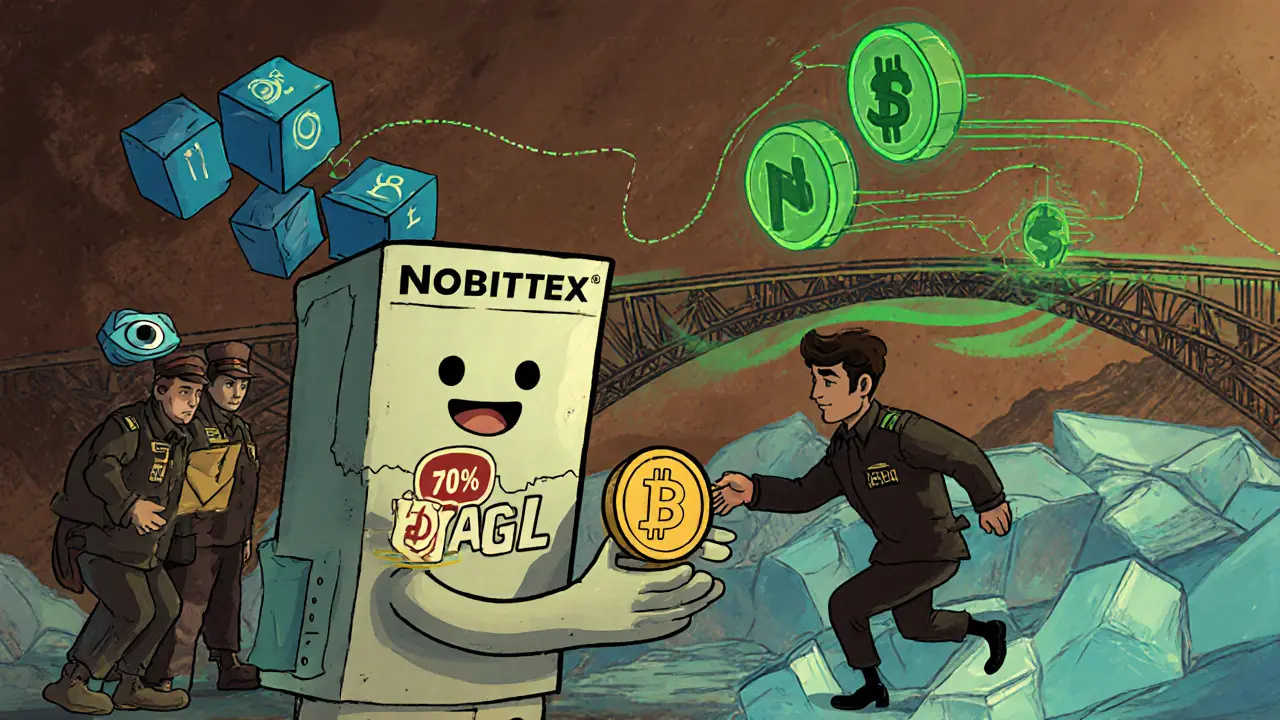
User behavior - how Iranians stay connected
Everyday Iranians have become adept at navigating a constantly shifting digital terrain.
- VPNs are the norm; community forums on Reddit and Telegram share step‑by‑step guides for masking IPs and accessing foreign platforms like Binance or KuCoin.
- After the July2025 Tether freeze, users rapidly swapped USDT for DAI via Polygon bridges, citing lower gas fees (≈$0.01 per transaction) and faster block times (2‑3seconds vs 12‑15seconds on Ethereum).
- Stablecoin arbitrage is common - traders convert Rial to USDT on Nobitex, move the tokens to Polygon, swap for DAI, and then cash out on less‑regulated exchanges in the UAE or Hong Kong.
- Mining has gone semi‑clandestine; high energy tariffs push many operators underground, using stolen electricity or tapping into Iran’s subsidized grid.
These practices illustrate a sophisticated user base that treats crypto not as a speculative hobby but as a financial survival tool.
Market size and flow dynamics
According to blockchain intelligence firms, sanctioned jurisdictions moved $15.8billion in crypto in 2024, with Iran accounting for nearly 60% of that volume. The country’s share rose sharply after the 2017 sanctions wave, making it the most active sanctioned actor by transaction value.
Key metrics for 2025 (Jan-Jul):
- Total inflow: USD3.7billion
- Dominant stablecoins: USDT (45%), DAI (30%), USDC (15%)
- Exchange concentration: Nobitex handles ~70% of Rial‑to‑crypto trades
- Mining hash rate: ~12% of global hash power, but only ~3% is officially licensed
Even with an 11% decline in the first seven months, demand remains robust because traditional banking channels are still blocked.
Enforcement actions and rapid adaptation
International watchdogs have sharpened their focus. Notable events in 2025 include:
- July22025: Tether froze assets in 42 Iranian‑linked wallets, many tied to Nobitex and IRGC addresses.
- 2024-2025: OFAC issued 13 designations of crypto wallets, the second‑highest in seven years.
- Aug2025: A coordinated crackdown targeted over 75 individuals and entities across China, HongKong, and the UAE for facilitating Iranian oil payments via crypto.
Each crackdown prompted a predictable pattern: users exit the targeted asset, migrate to a less‑monitored chain, and spread the load across multiple wallets. The July2025 shift from USDT to DAI on Polygon is a textbook example of this cat‑and‑mouse game.

Risks, challenges, and future outlook
While the ecosystem shows resilience, several headwinds could reshape it:
- Energy costs: Subsidized electricity may be rolled back, squeezing underground miners further.
- Regulatory tightening: If Tehran decides to clamp down on VPN usage or enforce stricter API compliance, domestic exchange volumes could tumble.
- International coordination: More aggressive wallet designations and cross‑border banking pressure could limit the ability to off‑ramp crypto into fiat.
- Technology shifts: Emerging layer‑2 solutions (e.g., zk‑Rollups) may offer Iranians new avenues for cheap, fast transfers, forcing sanction enforcers to adapt again.
Given the deep‑rooted need for alternative finance, crypto adoption in Iran is likely to stay high as long as sanctions linger. The government will probably continue a hybrid strategy: keep domestic exchanges under surveillance while tacitly allowing the underground market to function, because a total shutdown could spark economic unrest.
Stablecoin comparison - USDT vs DAI on Polygon
| Feature | USDT (Ethereum) | DAI (Polygon) |
|---|---|---|
| Average transaction fee | ≈$12‑$15 | ≈$0.01‑$0.02 |
| Block confirmation time | ≈13‑15seconds | ≈2‑3seconds |
| Regulatory scrutiny | High - frequently targeted by OFAC freezes | Lower - fewer direct designations |
| Liquidity on Iranian exchanges | Very high (Nobitex pairs) | Growing, but still limited |
| Cross‑chain bridge availability | Numerous (Ethereum mainnet) | Polygon‑Ethereum bridge, also Binance Smart Chain |
When sanctions freeze USDT wallets, the low‑cost, fast Polygon network becomes a lifeline for Iranians needing to preserve value without triggering immediate freezes.
Frequently Asked Questions
Why does Iran rely heavily on stablecoins?
Stablecoins give a predictable USD‑pegged value while staying on‑chain. For Iranians facing hyperinflation and Rial devaluation, moving funds into USDT or DAI preserves purchasing power and allows quick cross‑border transfers without bank intermediaries.
How does the Central Bank monitor crypto activity?
Domestic exchanges must integrate a government‑issued API that logs every trade, user ID, and wallet address. The CBI can then analyze flow patterns, flag suspicious volumes, and enforce tax or freezes as needed.
What happened during the July2025 Tether freeze?
Tether’s compliance team, acting on OFAC designations, locked 42 wallets linked to Iranian entities. The freeze immobilized over $250million worth of USDT, prompting a rapid shift to DAI on Polygon as users sought a less‑targeted stablecoin.
Is crypto mining still legal in Iran?
Yes, but only licensed operators can mine and must sell all output to the Central Bank at a state‑set price. Unlicensed mining is illegal and often runs underground due to high energy tariffs and the risk of equipment seizure.
Will sanctions eventually stop crypto use in Iran?
Unlikely. As long as traditional banking remains blocked, digital assets provide the only practical way for individuals and businesses to move value internationally. The government may tighten controls, but a complete ban could trigger economic unrest.
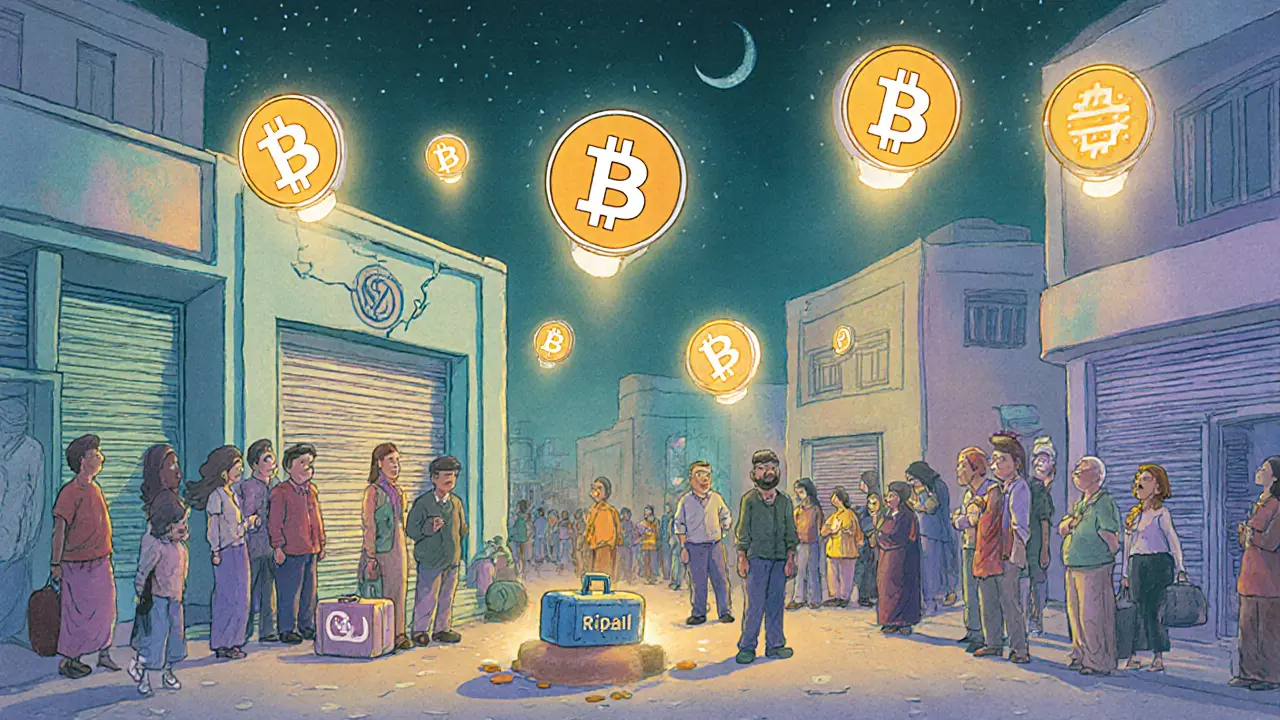
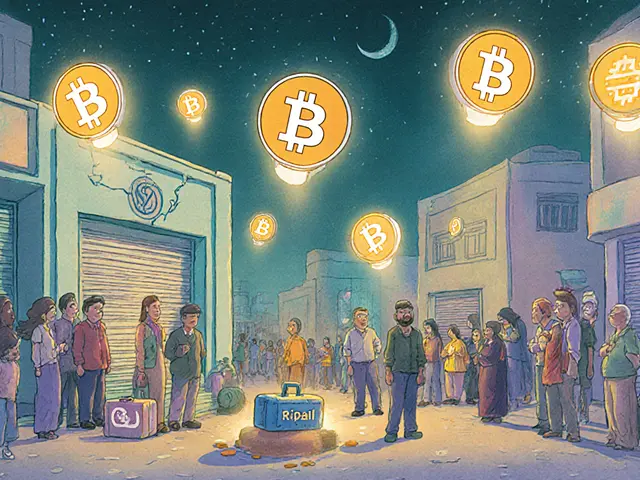


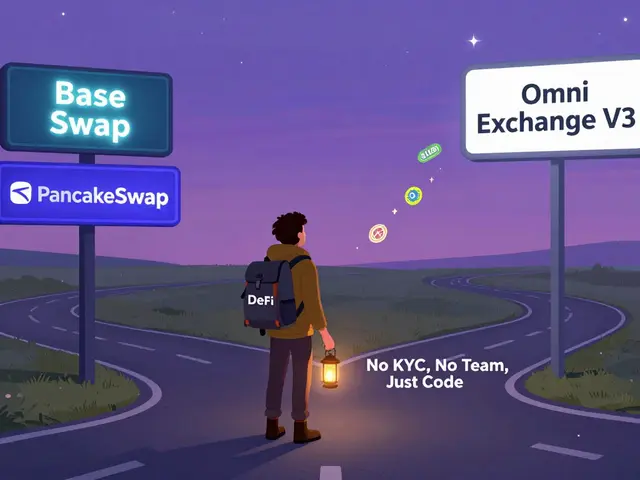
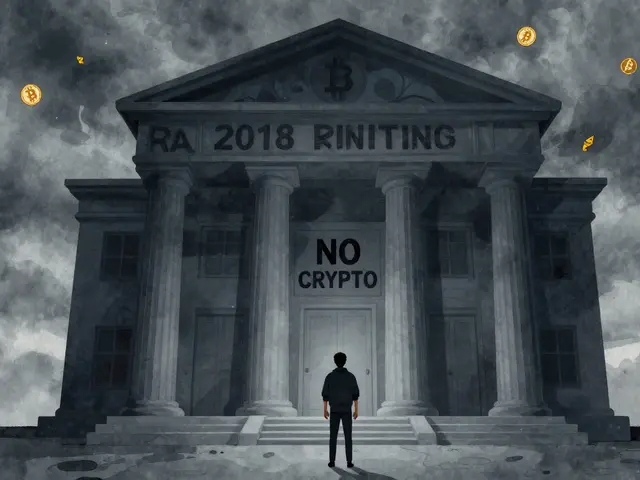

angela sastre
October 10, 2025 AT 08:14Wow, this is actually one of the clearest breakdowns of Iran’s crypto scene I’ve seen. DAI on Polygon is such a smart pivot-low fees, fast, and less targeted. People aren’t just gambling, they’re building survival systems. Respect.
Patrick Rocillo
October 11, 2025 AT 05:07DAI on Polygon = lifehack 🚀🔥 I’ve seen friends in Tehran use it to pay for meds from India. No banks? No problem. Crypto’s the new Rial.
Aniket Sable
October 11, 2025 AT 22:17in india we also use crypto for remittances but not like this. iran peopel are real warriors. 🙌
Santosh harnaval
October 12, 2025 AT 13:15Sanctions forced innovation. Not magic. Just necessity.
Sam Kessler
October 13, 2025 AT 09:58Let’s be clear: this isn’t financial freedom-it’s a sanctioned kleptocracy weaponizing DeFi. The IRGC isn’t ‘adapting’-they’re laundering through smart contracts. And calling Nobitex a ‘domestic exchange’ is laughably naive. It’s a state-run surveillance node disguised as a service. The CBI isn’t regulating crypto-it’s harvesting metadata for the mullahs’ surveillance state. DAI on Polygon? Cute. But it’s still just moving money through a digital minefield where every transaction is a potential OFAC trigger. This isn’t innovation-it’s financial desperation dressed up in blockchain jargon.
Steve Roberts
October 14, 2025 AT 05:32So let me get this straight: you’re praising a regime that steals miners’ hash power, monitors every wallet, and still lets people use crypto? That’s not resilience-it’s enabling tyranny. If you’re okay with the IRGC using DAI to buy drones, then you’re not pro-freedom, you’re pro-laundering. And don’t pretend this is about ‘survival’-this is about a dictatorship using tech to stay in power while its people starve.
John Dixon
October 14, 2025 AT 13:59Oh, wow. A 3.7B crypto flow... and you call this ‘resilience’? That’s not resilience-that’s a $3.7B tax on suffering. And you think DAI on Polygon is ‘clever’? It’s like handing a knife to a toddler and calling it ‘innovation.’ OFAC froze $250M? That’s a win. The real win would be freezing the entire regime’s access to the blockchain-until they stop using crypto to fund terrorism.
Brody Dixon
October 15, 2025 AT 10:51I get why people are drawn to crypto here-it’s the only way out. But I also worry about the people caught in the middle. The miners risking arrest. The traders getting flagged. The families just trying to buy food. This isn’t a tech story-it’s a human one. Maybe we need to stop cheering the tools and start demanding better policies.
Mike Kimberly
October 15, 2025 AT 23:40The Iranian crypto ecosystem is a fascinating case study in adaptive governance under extreme duress. The state’s hybrid model-co-opting infrastructure while permitting limited autonomy-mirrors historical precedents in wartime economies, where formal institutions are subverted to serve both control and survival. The shift from USDT to DAI on Polygon is not merely technical; it represents a strategic recalibration of trust architecture, moving from a centralized, politically vulnerable asset to a decentralized, permissionless one with lower transactional friction. This evolution reflects not just technological literacy, but a sophisticated understanding of global financial geopolitics. The fact that Iran now accounts for 60% of sanctioned-jurisdiction crypto flows suggests that economic isolation, rather than crippling innovation, has catalyzed an unprecedented decentralized financial diaspora. The real question is not whether this system will persist, but whether the international community will recognize it as a symptom-not a source-of systemic failure.
emma bullivant
October 16, 2025 AT 06:42i think the real tragedy here is that people have to become crypto engineers just to buy bread... and yet we still talk about it like it's a crypto bro meme. this isn't web3, this is web survival.
Laura Herrelop
October 16, 2025 AT 12:35They say the US froze Tether addresses... but what if the freeze was staged? What if OFAC knew exactly which wallets would shift to DAI and let it happen to track the migration? What if the whole ‘cat-and-mouse’ is a controlled experiment? The blockchain isn’t neutral-it’s a battlefield where every transaction is a fingerprint. And someone’s watching. Always watching.
Edwin Davis
October 17, 2025 AT 00:53Iran gets away with this because the West is weak. We let them use our tech to bypass our sanctions. This isn’t freedom-it’s betrayal. If we really wanted to hurt them, we’d shut down every node in their network. But no-we let them use our blockchain like a backdoor to the global economy. Shameful.
Jessica Smith
October 17, 2025 AT 05:38Everyone’s acting like this is a cool tech story. It’s not. It’s a criminal enterprise with a user interface. The IRGC isn’t ‘adapting’-they’re laundering. The CBI isn’t regulating-they’re spying. And you’re all applauding like it’s a startup pitch. This isn’t innovation. It’s organized crime with gas fees.
monica thomas
October 17, 2025 AT 08:31Could you clarify the exact mechanism by which the Central Bank of Iran’s API integration enables tax enforcement? Is the data collected in real-time, or is it batch-processed? And are there any documented cases of individuals being penalized for undeclared crypto gains under the new 2025 law?
Michael Hagerman
October 17, 2025 AT 17:12THEY FROZE $250 MILLION IN USDT... AND THEN EVERYONE JUST SWITCHED TO DAI?? This is the most dramatic plot twist since Game of Thrones. The crypto world is basically a soap opera where stablecoins are the villains and Polygon is the hero. I need a sequel. Also, who’s writing the theme song? I’ll sing it.
Karla Alcantara
October 18, 2025 AT 12:18It’s heartbreaking and beautiful at the same time. People are building lifelines with code because the world shut the door on them. I don’t cheer for the regime-but I cheer for the people who refuse to be broken. This isn’t about politics. It’s about dignity.
Will Atkinson
October 18, 2025 AT 22:28Love how the community just pivoted like it was nothing. USDT down? DAI up. Ethereum slow? Polygon fast. No panic. No drama. Just pure, quiet, hacker-grade problem-solving. This isn’t crypto bros. This is people who’ve been kicked in the teeth for years-and still found a way to stand up. Respect.
Nisha Sharmal
October 19, 2025 AT 15:08Oh please. Iran’s crypto use is just a cover for their nuclear program. Everyone knows it. The US is too soft. We should’ve blocked all blockchain access years ago. And why are you even talking about DAI? It’s just USDT with a new name. Same problem. Same evil.
Claymore girl Claymoreanime
October 19, 2025 AT 16:44You think this is about finance? No. This is about the end of the nation-state. The CBI monitors wallets? Great. But what happens when a teenager in Tehran uses a zk-Rollup to send $100 to their cousin in Turkey and the state can’t trace it? The whole system is crumbling. Sanctions are obsolete. The blockchain doesn’t care about borders. Or regimes. Or you.